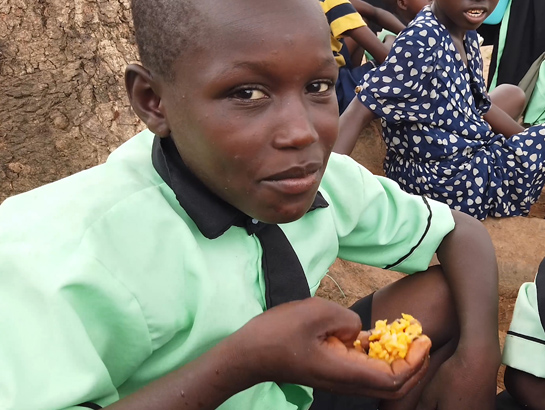Question: How do you interest smallholder farmers in growing nutritious, high yielding biofortified crops?
Answer: Create a vibrant market for these crops so farmers are able to sell some of what they grow and earn income, while also nourishing their families.
The basic principle of biofortification is to reach smallholder farming families with micronutrient-rich varieties of staple crops they already eat regularly, because these families cannot afford nutritionally diverse diets and are not easily reached by food fortification and supplementation initiatives. Delivering the nutrition through known crops makes practical sense.
But many of these farmers are not restricted to subsistence agriculture; they also need to earn money to buy things they need and cover expenses such as school fees and health care visits. HarvestPlus helps catalyze markets for farmers’ biofortified crops by partnering with crop aggregators, processors, retailers, and others to build robust demand and links to consumer markets. This also means that non-farm families have access to the same nutritious foods.
The video shows how HarvestPlus is providing technical support and strategic guidance to small- and medium-size food businesses and retailers in Nigeria to develop and market products made with biofortified ingredients such as vitamin A cassava and vitamin A maize, which were developed in partnership with CGIAR agricultural research centers. These biofortified products are spurring demand for biofortified crops that are currently grown by more than 2 million Nigerian farming families.
The video includes profiles of some of HarvestPlus’ business-sector partners. One is Cato Foods, a manufacturer of Casstard custard made from vitamin A cassava. “We are still scaling up because the demand for biofortified food products is very high,” says Pelumi Aribisala, a co-founder of Cato Foods.
To learn more about what Nigerian food businesses are doing with biofortified ingredients in Nigeria, see this article.
